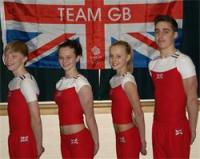Main Menu
Latest Blog Entry
User login
Madden on footwork
In “One knee equals two feet”, John Madden talks about footwork for linebackers. Madden was talking to a linebacker and asked him to analyse what he did…
“My feet and shoulders are lined up together, one told me. My first step is short, only 6 inches, then my next step is...”
The more he talked, the more I realised he was a robot. He was trying to play linebacker the way some dance students try to learn the tango. By the numbers. One, two, three, four. You don’t play linebacker by the numbers. You play it by instinct.”
John Madden
Madden also talks about quarterback footwork when they drop back to pass, and how precise it has to be so that the QB can deliver the ball quickly and from the right side. The difference is between a set play for the QB and the reactions and search and destroy attitude of the linebacker in open play.
Two main types of agility training
I have mentioned before the difference between programmed agility (which can be measured and tested) and unprogrammed agility (which is instinctive) and how they can be trained.
Programmed agility is useful for set routines and allowing the progression of stabilisation, braking and then speed. More acute turning angles and complexity of obstacles can be used to develop leg strength at different angles. Equipment such as poles and cones are useful in setting up these drills.
Unprogrammed agility can be trained by creating drills and games that force the player to react instinctively. Here the best equipment is other players and balls that are moving without pattern.
This activates the Central Nervous System more.
Good Coaches can use both in their training programmes, recognising when each player in their position needs which one.
- Programmed agility requires underlying mechanical strength to be effective.
- Unprogrammed agility requires underlying movement skills to be effective.
I make sure I use a mix of both when coaching our athletes
So, did I come up with this on my own, or have I been influenced by listening to Madden?
Client Testimonials
 Weston AGC
Weston AGC
I first met James at a South West Gymnastic conference and thought he was superb then, and still do! James' ability to adapt to different sports and levels is excellent, and he is superb at getting his message across to different ages of gymnasts. He did a workshop at our club for our competitive gymnasts and it was superb, His work was of great value to a wide range of ages and levels, with a tremendous emphasis on posture and injury prevention. We have been able to put his training methods into practice and are seeing an improvement in the all round strength and fitness of our gymnasts.
More


Comments
[…] (Remember John Madden’s thoughts on footwork?) […]